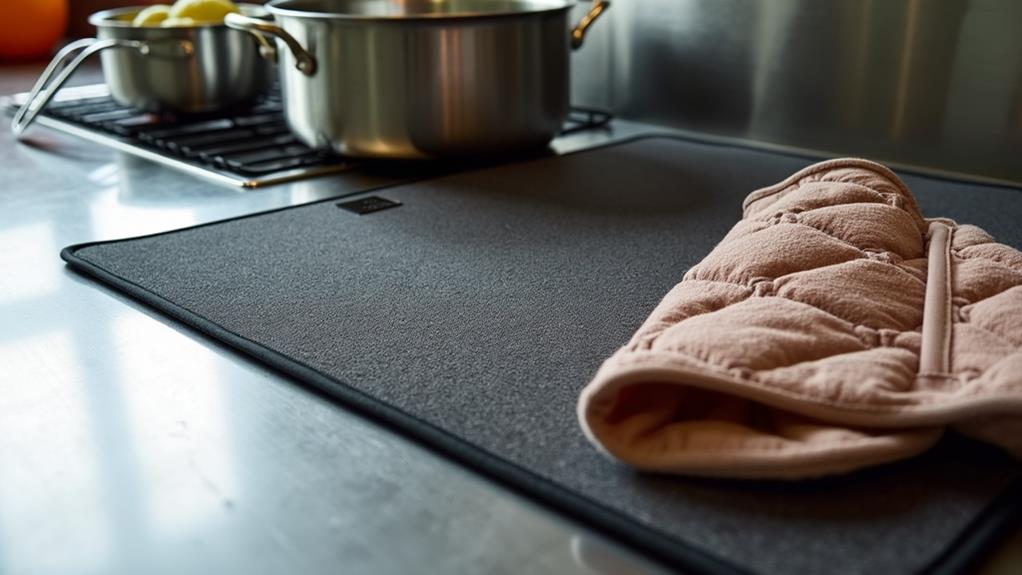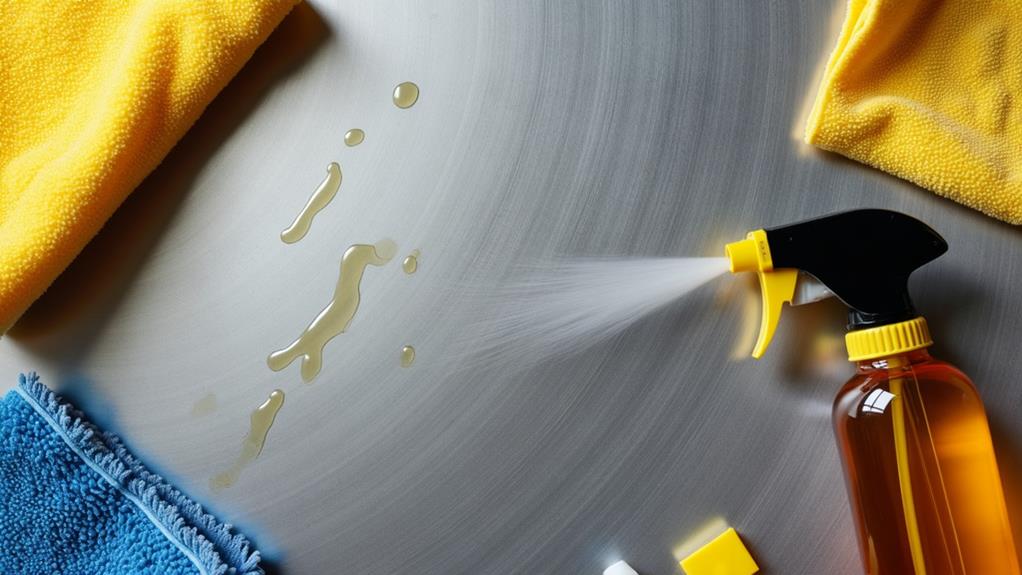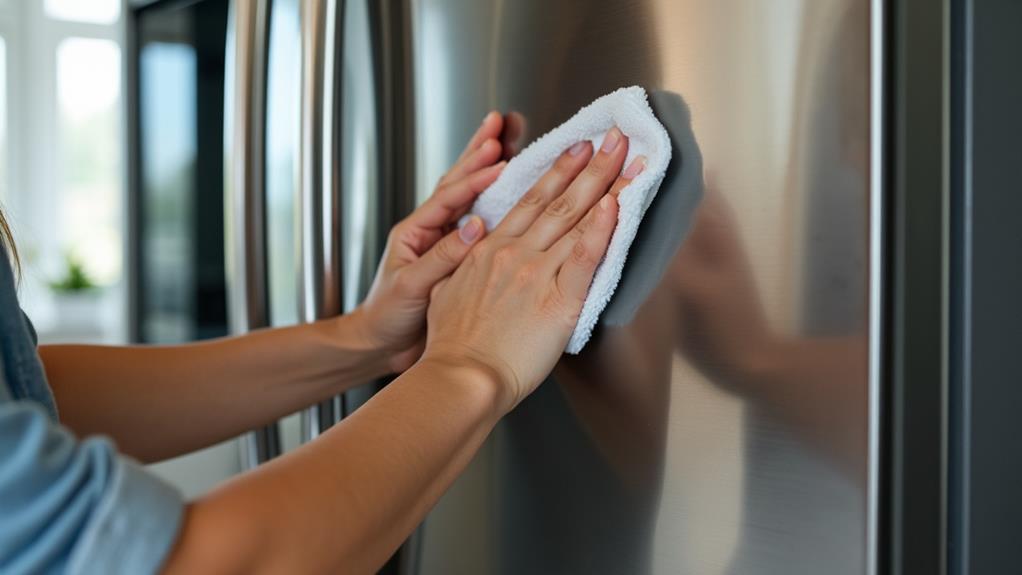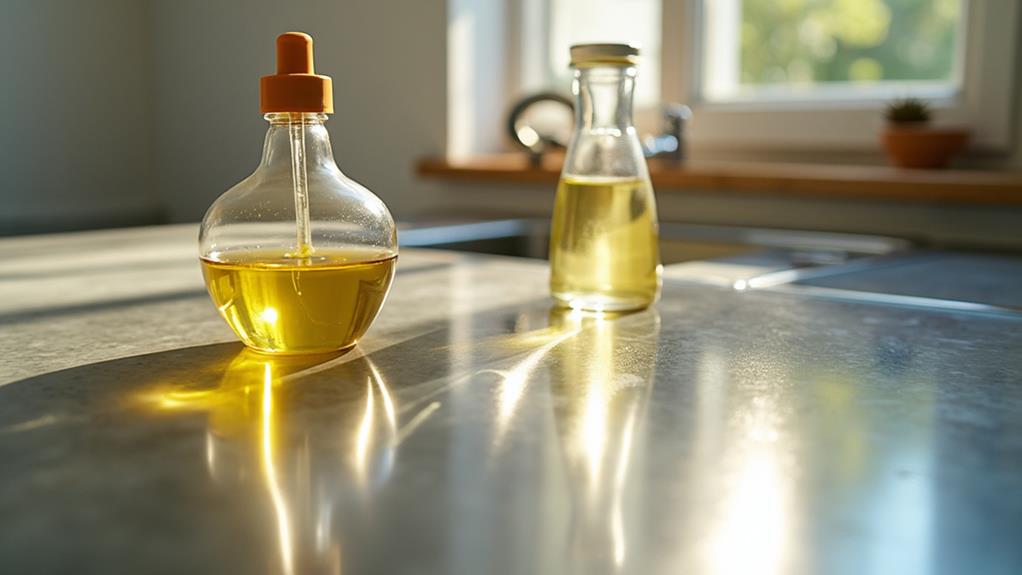How to Remove Fingerprints From Stainless Steel Without Chemicals

You can easily remove fingerprints from stainless steel surfaces without harsh chemicals using a few simple methods. Start with a clean, dry microfiber cloth and wipe in the direction of the grain. For tougher spots, spray white vinegar, let it sit for a couple of minutes, then wipe. Alternatively, try rubbing with a cloth dabbed in olive oil for a polished look. A baking soda paste or fresh lemon juice can also tackle stubborn prints. Maintain the shine by regularly wiping with a microfiber cloth. Stick around, and you'll uncover even more effective techniques.
Microfiber Cloth Method
Removing fingerprints from stainless steel can be a straightforward task if you use the right tools, and a microfiber cloth is your best friend for this job. Begin by ensuring your microfiber cloth is clean and dry. Gently wipe the stainless steel surface in the direction of the grain. This step is essential for avoiding scratches and achieving a streak-free finish.
Microfiber cloths are designed to trap dust, oil, and fingerprints without needing any further cleaning agents. Their soft fibers are perfect for lifting away smudges and leaving your stainless steel looking spotless. If you encounter stubborn fingerprints, apply a bit more pressure but continue to work in the direction of the grain.
After you've wiped the entire surface, inspect it for any remaining streaks. If you see any, simply fold your cloth to a clean section and go over the area again. The beauty of microfiber cloths is that they don't leave behind lint or scratches, ensuring a pristine, streak-free finish every time. So, the next time you notice fingerprints on your stainless steel appliances, reach for a microfiber cloth and enjoy the gleaming results.
Using White Vinegar
When tackling fingerprints on stainless steel, white vinegar is a powerful ally. It's an effective, natural solution that you likely already have in your kitchen. To begin, pour some white vinegar into a spray bottle for easy vinegar application. This method is simple, eco-friendly, and doesn't involve harsh chemicals.
Start by spraying the white vinegar directly onto the stainless steel surface. Make sure you cover the fingerprints and any other smudges you want to eliminate. Let the vinegar sit for a minute or two, giving it time to break down the oils and dirt. Then, take a soft microfiber cloth and wipe the surface in the direction of the stainless steel's grain. This helps maintain the appliance's finish while effectively removing the fingerprints.
For stubborn spots, you might need to apply a bit more vinegar and give it another pass with the cloth. The beauty of using white vinegar lies in its simplicity and effectiveness, making it a go-to natural solution for cleaning stainless steel. By incorporating this method into your routine, you'll keep your appliances looking pristine without resorting to chemicals. Happy cleaning!
Olive Oil Technique
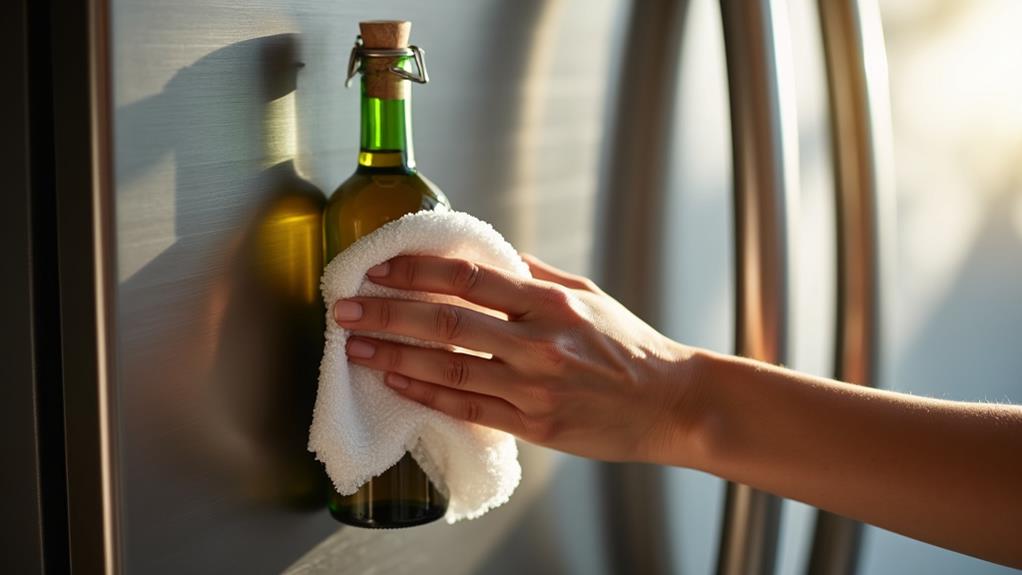
Beyond the benefits of white vinegar, another effective method for banishing fingerprints from stainless steel involves using olive oil. This kitchen staple isn't just for cooking; it's also great for stainless steel care. Olive oil benefits your appliances by providing a natural, non-toxic way to remove smudges and add a protective layer that repels future fingerprints.
To start, you'll need a clean microfiber cloth and a small amount of olive oil. Apply a few drops of olive oil onto the cloth, being careful not to overdo it—less is more in this case. Gently rub the cloth in the direction of the stainless steel's grain. This not only removes existing fingerprints but also buffs the surface, giving it a nice sheen.
Continue to work the olive oil into the steel until the fingerprints are gone and the surface looks polished. If there's any excess oil, use a dry part of the cloth to wipe it away. With minimal effort, you've achieved a fingerprint-free finish and improved the durability of your stainless steel appliances. This method is both simple and effective, making it a go-to solution in your stainless steel care routine.
Baking Soda Paste
Another effective way to tackle fingerprints on stainless steel is by using a baking soda paste. To make the paste, simply mix baking soda with a small amount of water until it forms a thick, spreadable consistency. The baking soda benefits include its mild abrasiveness, which helps lift oily residues without scratching the surface of your stainless steel appliances.
Apply the paste directly to the fingerprinted area using a soft cloth or sponge. Gently rub in a circular motion, ensuring you cover all the smudges. After a few minutes, rinse the area with a damp cloth to remove any remaining paste, then dry it with a clean, dry towel. You'll notice that the fingerprints have vanished, leaving a shiny, streak-free finish.
If you don't have baking soda on hand, consider baking soda alternatives like cornstarch or flour. Both are gentle abrasives that can help clean stainless steel surfaces effectively. Just mix either alternative with water to form a paste and follow the same application steps. By using these natural methods, you can keep your stainless steel looking pristine without resorting to harsh chemicals.
Lemon Juice Solution
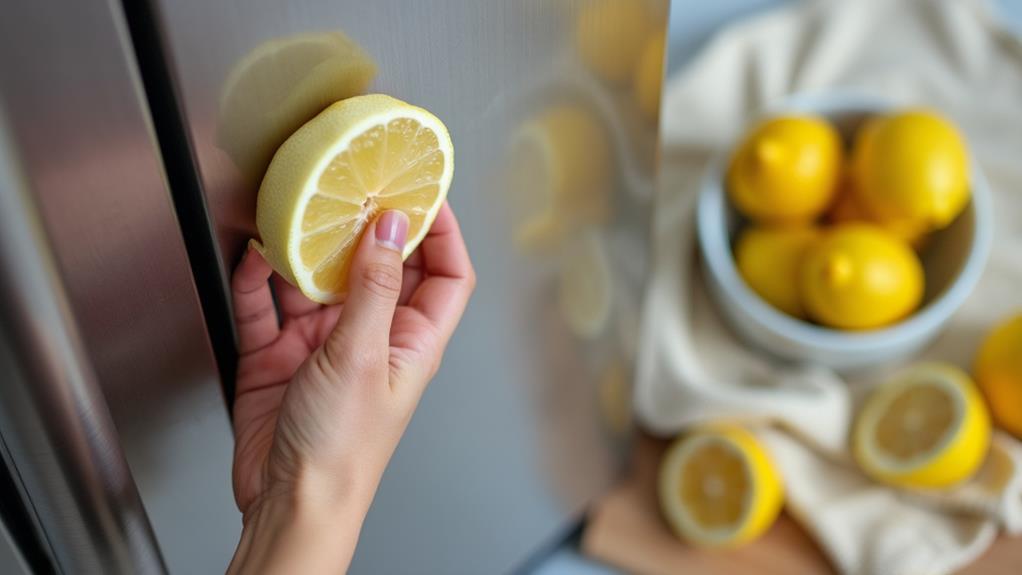
Harnessing the natural acidity of lemon juice is another excellent way to remove fingerprints from stainless steel. This method is simple and effective, and you'll appreciate the lemon benefits beyond just cleaning. Lemons are a natural cleaner, making them a perfect alternative to harsh chemicals.
First, cut a fresh lemon in half. Squeeze the juice into a bowl, making sure there are no seeds. Dip a soft cloth or sponge into the lemon juice. Gently rub the affected stainless steel areas in circular motions. The acidity in the lemon juice breaks down the oils and residues left by fingerprints, leaving your surface clean and shiny.
After you've wiped the entire area, take a separate damp cloth, and wipe away the lemon juice residue. It's crucial to remove all the juice to avoid any potential stickiness or streaking. Ultimately, dry the surface with a microfiber cloth to guarantee a streak-free finish.
Lemon juice not only cleans but also leaves a pleasant, fresh scent. This approach is a win-win: you get a spotless stainless steel surface and enjoy the numerous lemon benefits without ever having to use chemicals.
Regular Maintenance Tips
While lemon juice offers an excellent way to clean your stainless steel, keeping it fingerprint-free requires consistent care. Routine cleaning is vital in maintaining that gleaming, spotless look. Make it a habit to wipe down your stainless steel surfaces daily with a soft, microfiber cloth. This simple step helps to remove any oils or smudges before they become stubborn stains.
For deeper cleaning, use a mixture of warm water and a few drops of mild dish soap. Dampen a cloth with this solution and gently wipe the surface, then follow up with a dry cloth to prevent water spots. This approach guarantees that your stainless steel remains shiny without resorting to harsh chemicals.
Surface protection is similarly important. Consider applying a small amount of mineral oil or olive oil to a cloth and lightly buffing your stainless steel appliances. This not only adds a protective layer but also minimizes the appearance of fingerprints.
Lastly, always wipe in the direction of the steel's grain to avoid scratches. By incorporating these regular maintenance tips into your cleaning routine, you'll guarantee that your stainless steel stays pristine and fingerprint-free.

